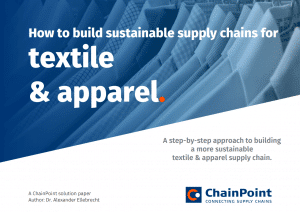BCI: Endorsing a claim for Better Cotton
The Better Cotton Initiative (BCI), founded in 2009 and initiated by some visionary organisations, including Adidas, H&M, IKEA, Oxfam and WWF, aims to improve the livelihood and economic development in cotton producing areas, reduce the environmental impact of cotton production and secure the future of the sector. It challenges things like damaging crop protection practices, water abuse, diminishing soil fertility and unhealthy practices such as child or forced labour.


The goals of BCI
To reach this goal, the Better Cotton Initiative defines what a better, more sustainable way of growing cotton looks like, and trains and supports farmers to adapt to the corresponding techniques.
In 2013, 680,000 farmers produced 905,000 metric tonnes of Better Cotton. The goal is to increase these numbers to 5 million and 8.2 million respectively by 2020.
Better Cotton Chain of Custody
To make certain that retailers and brands can be confident in making claims about Better Cotton, BCI introduced Chain of Custody requirements for the supply chain and developed a tracking and tracing system, called Better Cotton Platform, powered by ChainPoint. This system comprises the supply chain from the ginner all the way to the retailer. It is a mixture of mass-balance administration and the tracing of so-called “Better Cotton Claim Units” (BCCUs).
The supply chain of BCI
The figure below shows a typical supply chain for Better Cotton. Farmers bring their yield to a cotton gin, where cotton fibres are separated from their seeds and then processed into cotton bales. These bales are traded or directly sold to spinners that in turn supply fabric mills with yarn. The fabric is sold and further processed into consumer products, like clothes, which are then delivered to retailers.
How the Better Cotton Platform works
In a mass-balance system the volumes of sustainable product are tracked from ginners to the yarn spinners in ChainPoint. The Better Cotton Platform ensures that a trader cannot sell more Better Cotton to yarn spinners than he acquired from Better Cotton ginners. At the yarn spinner, each kilo of Better Cotton is then swapped into a BCCU.
Once the Better Cotton continues its journey through the supply chain as yarn, cloth and the final product, it is accompanied by these BCCUs.
At the end, a retailer can trace the BCCUs back to the yarn spinner that issued them, by using the Better Cotton Platform.
Download our solution paper.
How to build sustainable supply chains for textile & apparel
Download our solution paper, offering you an overview of the cotton market and the solutions available to improve sustainability. A step-by-step approach to building a more sustainable textile supply chain.
Fill in the form at the right to receive your solution paper directly via email.


